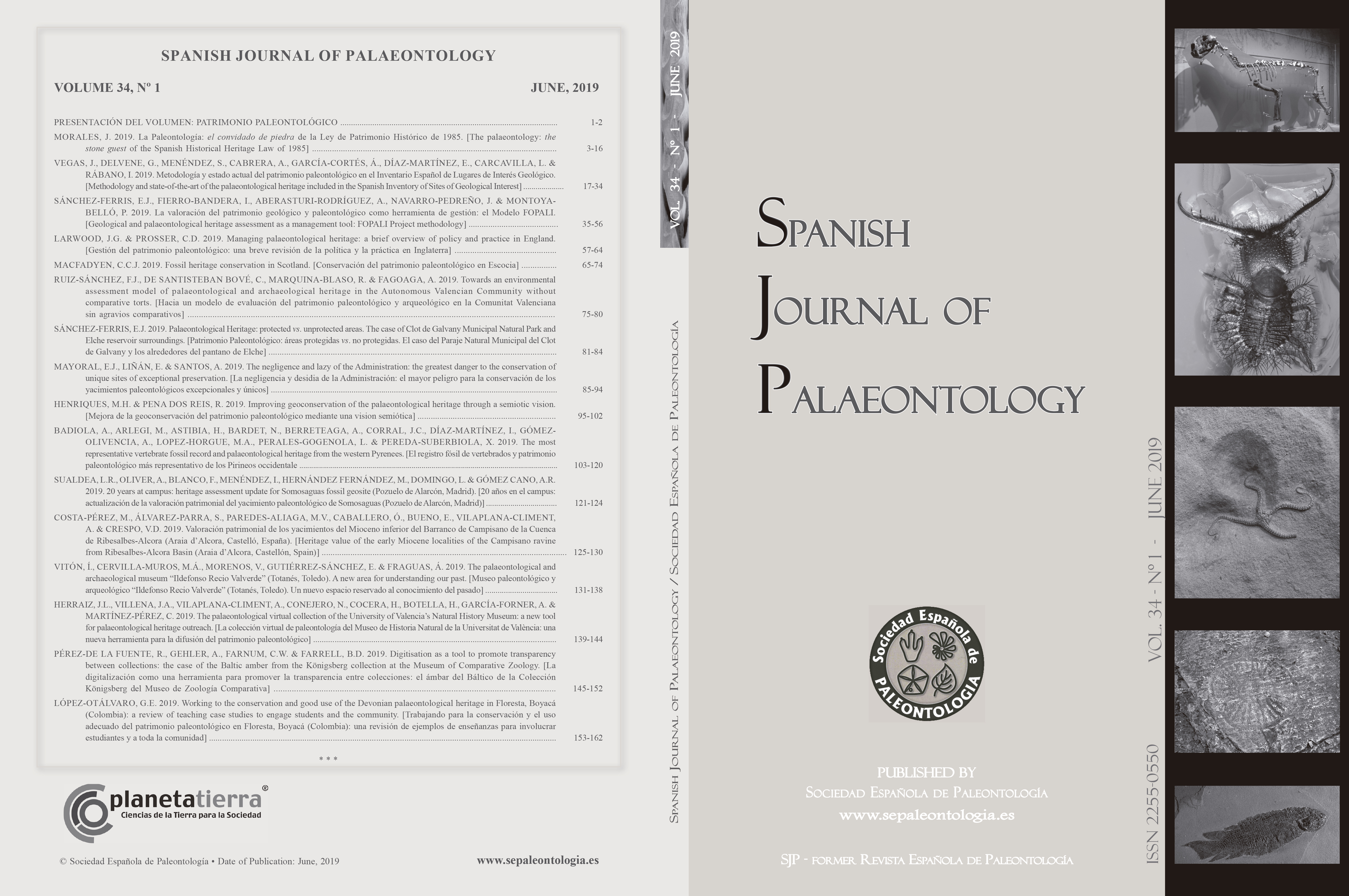The most representative vertebrate fossil record and palaeontological heritage from the western Pyrenees
DOI:
https://doi.org/10.7203/sjp.34.1.15297 Resumen
Resumen
The western Pyrenees is a territory with a remarkable geodiversity and an important fossil record, which constitutes a large archive of palaeobiodiversity. With respect to the vertebrate fossil record, the western Pyrenees (Basque-Cantabrian Region, Pamplona Basin and the north-western sector of the Ebro Basin) are relevant both from the point of view of palaeontological sites and fossil collections. Several vertebrate fossil sites are integrated into the Inventory of Geological Interest Sites (LIG) with high to very high palaeontological interest of the Autonomous Community of the Basque Country. The valuation of the palaeobiodiversity and fossil record is an important step for the study of palaeontological heritage of a territory and the set-up of geoconservation designations (e.g., LIG, geosites). However, the mere inclusion of the palaeontological assents in these geoconservation designations does not guarantee either their protection and conservation or the suitable management of the fossil collection The scientific and cultural dissemination of the palaeontological heritage of a territory like one studied here should have greater collaboration between the palaeontologists that have valued the palaeontological assets and the technicians and institutions that manage them. This requires the provision of specific budgetary items that enable the development of the different activities of research, conservation and social dissemination of this heritage.
 Descargas
Descargas
Descargas
Publicado
Cómo citar
-
Resumen732
-
PDF 357
Número
Sección
Licencia
![]()
Este es un artículo de libre acceso distribuido bajo los términos de la Creative Commons Attribution 4.0 International License.



